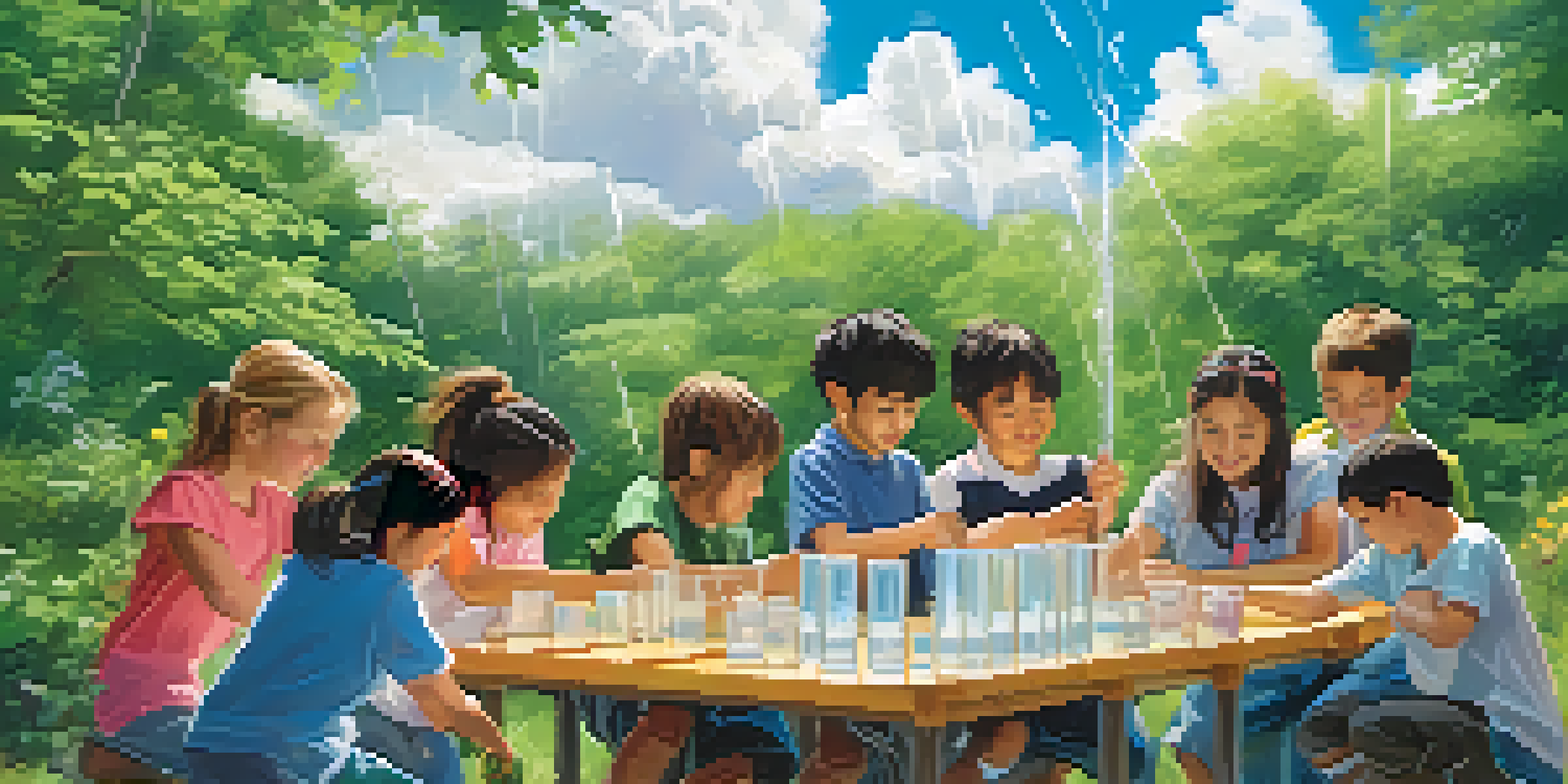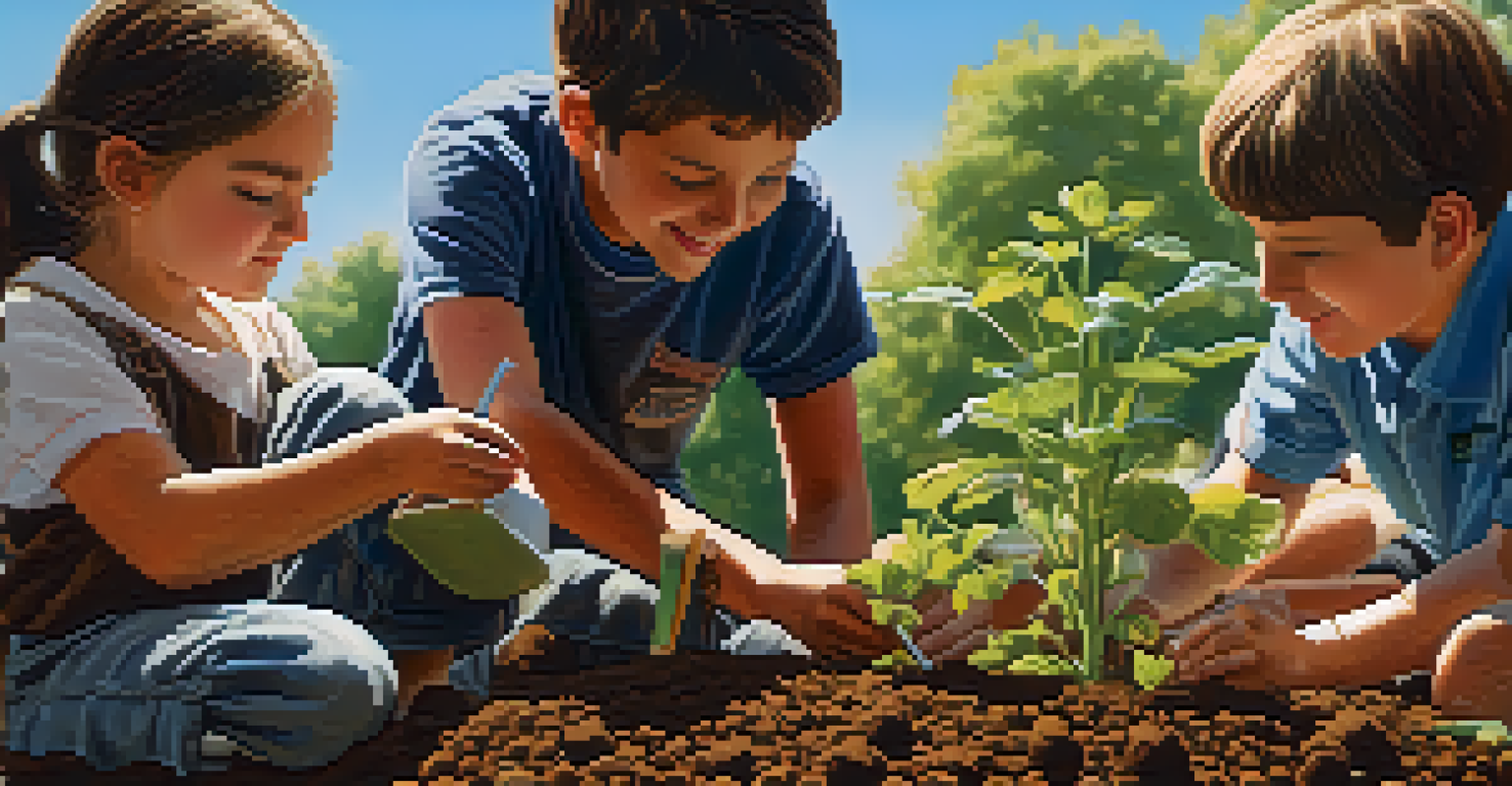Outdoor Science Experiments to Engage Students

The Importance of Outdoor Learning for Students
Outdoor learning offers students a unique opportunity to explore science in a hands-on environment. This approach not only enhances understanding but also fosters a love for nature and the scientific process. By stepping outside the traditional classroom, students can engage with their surroundings and see how science applies to their everyday lives.
The best classroom and the richest cupboard is roofed only by the sky.
Moreover, outdoor activities can boost motivation and participation among students. When learning occurs in a fresh, open space, it becomes more dynamic and less intimidating. This shift in environment can lead to increased curiosity, sparking questions and discussions that might not arise indoors.
Additionally, outdoor experiments allow for collaboration and teamwork. Students often work together to observe, hypothesize, and experiment, reinforcing valuable social skills while deepening their understanding of scientific concepts.
Simple Weather Experiments to Start With
Weather experiments are a fantastic way to combine observation with scientific inquiry. One easy experiment is creating a simple rain gauge using a clear container marked with measurements. Students can place it outside and track rainfall over time, discussing patterns and weather predictions.

Another engaging activity is making a homemade barometer to measure air pressure changes. Using a balloon and a glass jar, students can visualize how air pressure affects weather, leading to discussions about storms and sunny days. This hands-on experiment makes complex concepts more relatable and fun.
Hands-On Learning Enhances Engagement
Outdoor experiments boost student motivation and curiosity by allowing them to connect science with real-world observations.
These weather experiments not only teach science but also encourage outdoor exploration. Students can observe changes in the environment and relate them to their findings, creating a deeper connection between the science lessons and the world around them.
Exploring Plant Biology Through Outdoor Activities
Plants are a perfect subject for outdoor experiments, allowing students to observe growth and adaptation firsthand. A great activity is to plant different seeds in various environments—sunny, shady, and wet—and track their growth over time. This hands-on approach makes the study of plant biology engaging and visual.
In every walk with nature one receives far more than he seeks.
Students can also explore photosynthesis by measuring the rate of plant growth in sunlight versus shade. By documenting their findings, they can gain insights into how light affects plant life, making the process of learning about vital biological processes exciting and interactive.
Moreover, these activities can spark discussions about ecosystems and biodiversity. Students can learn the importance of plants in our environment, fostering respect and curiosity for nature.
Fun Chemistry Experiments You Can Do Outside
Outdoor chemistry experiments can be both educational and entertaining. One classic experiment is the baking soda and vinegar volcano, which demonstrates chemical reactions in a visually exciting way. Students can modify the experiment by adding food coloring to see how different variables affect the outcome.
Another engaging activity is making slime using simple household ingredients. This hands-on project allows students to explore polymers and viscosity while having a blast squishing and playing with their creations. It's an excellent way to blend fun with learning.
Collaboration Builds Social Skills
Working together on outdoor science projects reinforces teamwork and critical thinking among students.
These outdoor chemistry experiments encourage students to ask questions and hypothesize about the outcomes. By encouraging experimentation, you foster a culture of curiosity and innovation among your students.
Engaging with Physics Through Outdoor Challenges
Physics can come alive outside through engaging challenges that promote critical thinking. An intriguing activity is building and launching paper rockets. Students can experiment with different designs and materials to see which flies the highest, reinforcing concepts like thrust, aerodynamics, and gravity.
Another exciting option is setting up a simple pendulum experiment using a swing. Students can explore concepts of motion, force, and energy conservation as they observe how variations in length and weight affect the swing's motion. This hands-on approach makes physics tangible and relatable.
These outdoor challenges not only teach physics principles but also encourage creativity and problem-solving skills. Students learn through trial and error, developing resilience as they refine their designs and approaches.
Incorporating Nature Studies into Your Curriculum
Nature studies can seamlessly blend with outdoor science experiments, enhancing students’ understanding of ecology and environmental science. A simple activity is to create a nature scavenger hunt, where students search for various plants, animals, and natural phenomena. This fosters observational skills and a connection to biodiversity.
Additionally, students can set up a mini-ecosystem in a jar, observing interactions between plants and animals over time. This hands-on project allows them to witness the delicate balance of ecosystems firsthand, reinforcing lessons about sustainability and conservation.
Nature Studies Foster Environmental Care
Incorporating nature studies into the curriculum encourages students to appreciate and take responsibility for the environment.
By incorporating nature studies, you cultivate a deeper appreciation for the environment. Students not only learn science but also develop a sense of responsibility toward protecting our planet.
Safety Tips for Outdoor Science Experiments
Safety is paramount when conducting outdoor science experiments. First and foremost, ensure that students wear appropriate clothing and footwear. This will make them comfortable and safe as they engage in various activities. It's also crucial to assess the area for any potential hazards, such as sharp objects or poisonous plants.
Moreover, always have a first-aid kit on hand to address any minor injuries. Teaching students the importance of safety procedures will instill a sense of responsibility and awareness. Discussing potential risks and how to mitigate them before starting any experiment can also create a safer learning environment.

Finally, encourage students to communicate openly about any concerns they may have during the experiments. This ensures that everyone feels secure and engaged, allowing for a positive outdoor learning experience.
Wrapping Up: The Benefits of Outdoor Science Learning
In conclusion, outdoor science experiments enrich students' learning experiences and foster a love for exploration. By engaging with their environment, students can see the practical application of scientific concepts, making learning both relevant and exciting. These experiences often lead to lasting memories and a deeper appreciation for the natural world.
Moreover, outdoor learning promotes collaboration, creativity, and critical thinking. Students develop essential skills as they work together to solve problems and make observations. This hands-on approach helps them retain knowledge more effectively, paving the way for future scientific endeavors.
Ultimately, integrating outdoor science experiments into your curriculum can transform education. It's an investment in students' curiosity, passion, and understanding of the world around them, setting the stage for lifelong learning.